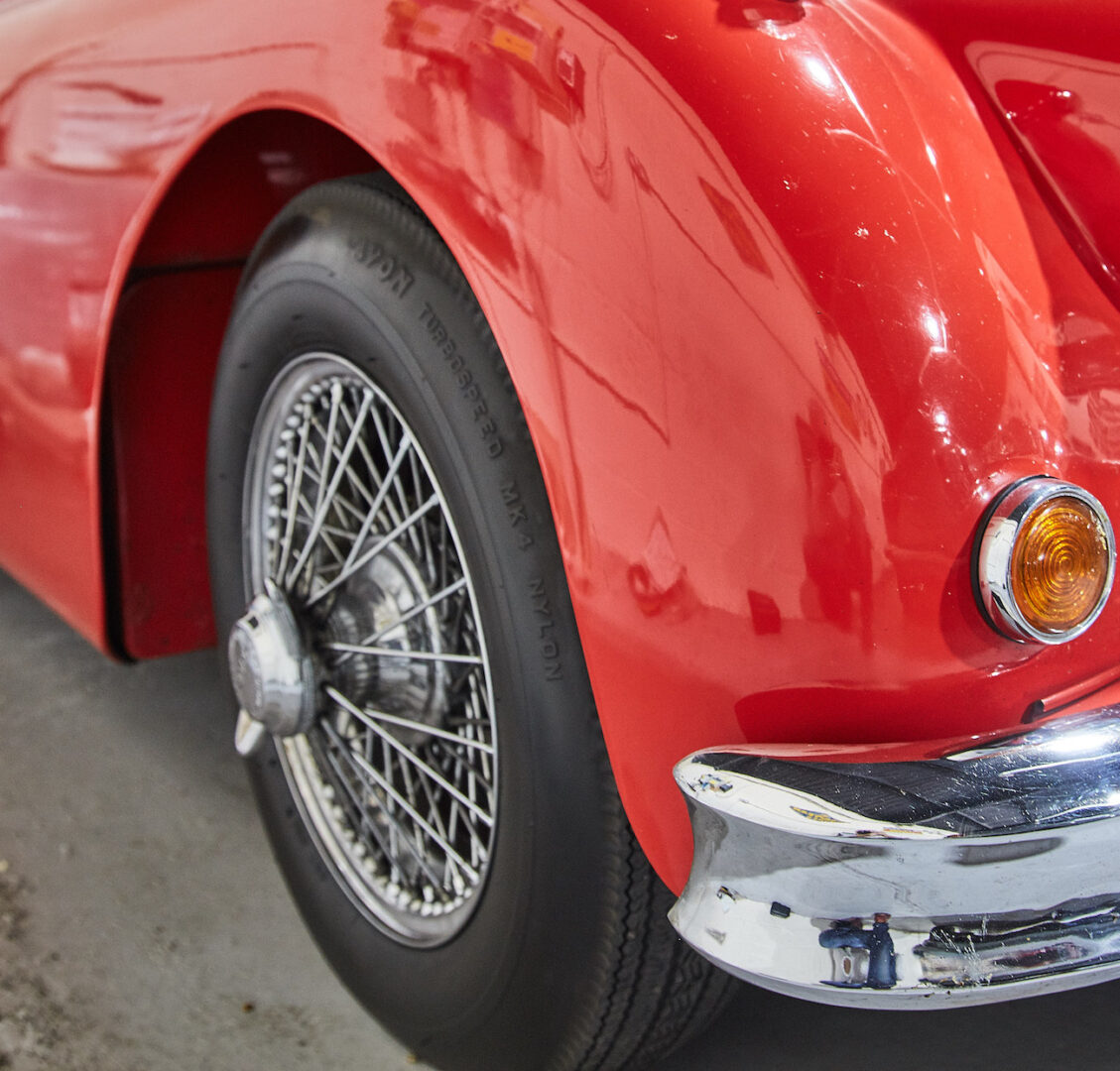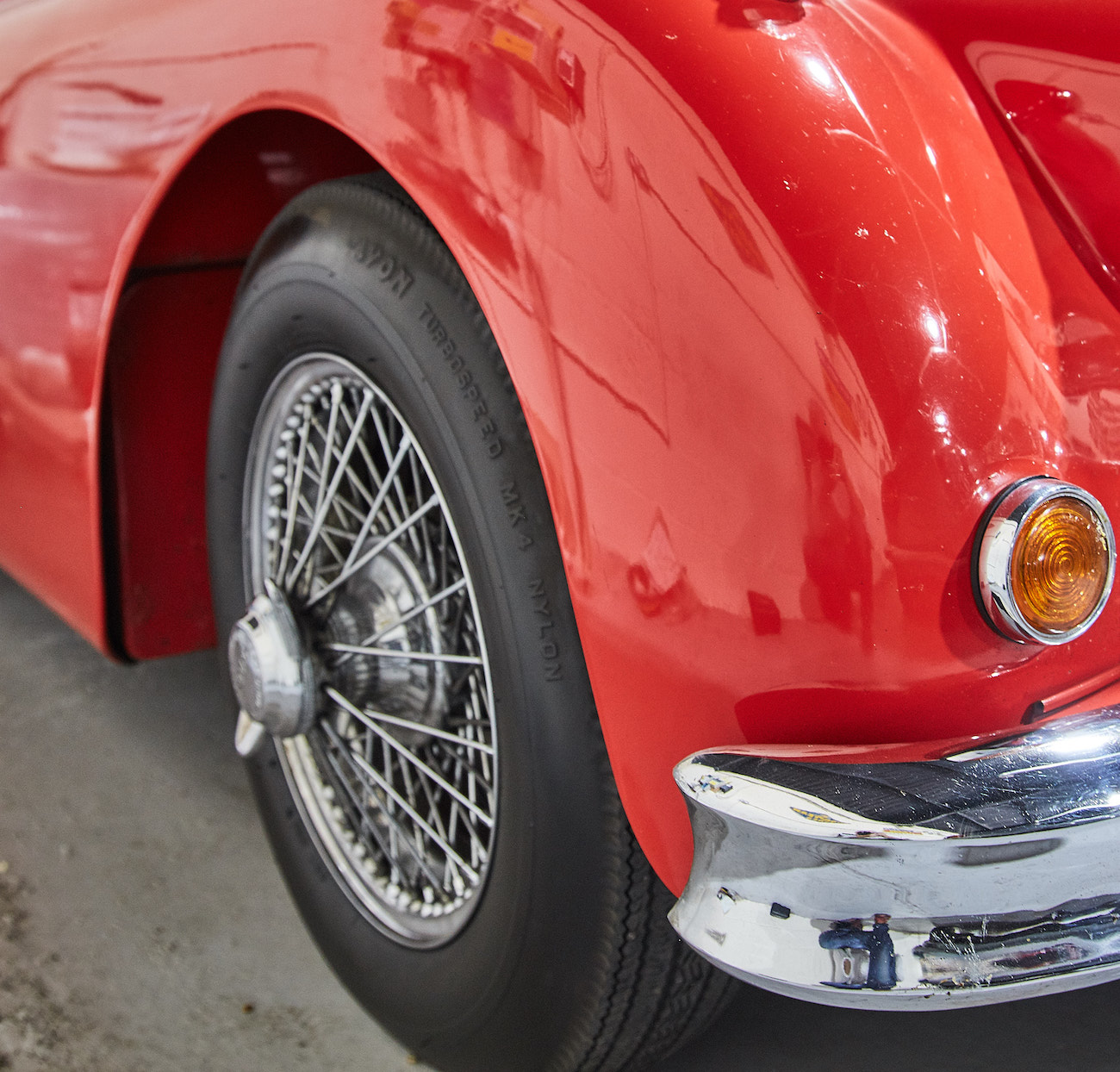Looking after your car tyres will look after your investment
Showcasing timeless designs and genius ingenuity, classic cars are a reminder of an era gone by. If maintained well, they’ll bring years of enjoyment to their current owners and continue to be cherished well into the future. One of the key aspect that any serious classic car owner will focus on is preserving the integrity of their car and protecting its authenticity. However, some parts of the car simply aren’t built to last, especially if your car is in regular use. This includes tyres. Tyres are not going to last as long as the rest of your classic car. However, maintaining the quality of your specialist classic car tyres is crucial to enjoying your car at its best in terms of both performance and safety- and more of it comes down to storage than you may first think.

Why are tyres so important for your classic car?
Having the right tyres is essential for any car taking to the roads, but what specific difference do they make to your classic car?
There’s plenty of anecdotal evidence out there about certain classic cars (and especially American muscle cars) having poor handling and acceleration. Generally, the older the car, the poorer the overall handling will be- this can partly be due to age as well as the technology that was available when it was made.
Tyres play an essential role in maintaining that handling control with handling and control, which will make your classic car more usable.
Type specifications on classic cars
Despite being integral for safety and performance, classic car tyres aren’t all about practicality- usually, the owner will want to keep it as authentically close to the original as possible.
Depending on the age and model of car, the tyres will differ by:
- Size
- Pressure
- Rim diameter
- Old design vs. new
- Height of the tyre section
- Wheel diameter
- Tyre Diameter
- Aspect ratio
Simply updating a classic car with standard modern tyres takes something very important away from the car’s look, feel and driving experience. And for older vintage models, modern tyres are a complete no-go.
Vintage tyres
There’s a huge range of classic car tyre specifications from over the last century and a half, but what are some of the most renowned classic tyre types?
Beaded edge tyres
Used up until 1927, these tyres are primarily used on vintage and veteran European cars, which are recognisable by their narrow crown (contact surface). They are constructed with large ridges of hard rubber around the circumference.
The beads of the tyres fit into the hook of the rim- this is where tyre pressure comes in. In order to make the beads fit into the hook and stay there, they need to be inflated to at lead 60PSI.
Wired on tyres
Following on from beaded edge tyres, wired on tyres were introduced as a safer alternative. The beads in these tyres have wires that are there to stop the bead from stretching. This means it will always be smaller than the wheel so it won’t come off.
Cross-ply tyres
These are constructed with interlocked cords, layered across each other at a right angle, encased within a rubber shell. This is to create rigidity and strength so the tyre is protected against impacts.
While cross-ply tyres are one of the cheaper options, there are also a few issues- There’s a lack of flexibility so there’s less comfort, and there’s also a high rolling resistance, causing wheels to heat quickly and the car to burn through more fuel.
Radial tyres
Radial tyres are made in a completely different way to cross-ply. The sidewall and the tread work independently. The sidewalls are flexible because steel cord plies (piled on top each other) are placed on the heel of the tyre and a belt is put across the shell.
The flexibility is able to improve the stability of the car, and combined with their high level of strength, radial tyres can absorb impacts better than cross-ply- however, their soft sidewall presents a problem if scraped against curbs, etc.
In terms of looking after the tyres you currently have (if they’re safe), there are some key things you can do to lengthen their lifespan and keep them in tip-top condition. But how do you know if your current tyres are safe, to begin with?
Keeping your tyres safe
Even though most classic cars aren’t legally required to get an annual MOT, making sure you take care to keep your classic car safe and roadworthy is essential to enjoying it in its full glory.
Tyres are often an overlooked area of classic car care, but safety rules and regulations are there for a reason, so making sure your tyres comply with the law is essential.
Here are a few things every car owner should be aware of:
- Tyres must legally be replaced once tread gets down to 1.6mm
- Continental recommends changing summer tyres at 3mm and winter ones at 4mm
- Any tyres over the age of ten years should be replaced (including spares)
- You can find out the age of any car tyre by looking at the markings on the side of the tyre after the ‘DOT’ symbol. The last two members denote the year it was made.
In the classic car world, ‘old’ doesn’t mean ‘bad’, but that mentality can mean it’s too easy to let slip the vital parts that need regularly replacing. It’s a good idea to document the age of your tyre and set a reminder for the minimum time frame for when it will need replacing.
Looking after your classic car tyres
While there’s good practise every car owner can follow, for classic car owners, there’s even more responsibility to protect the integrity of the vehicle.
For many classic car owners, their vehicle is their pride and joy, and so going above and beyond isn’t a question. So what extra steps can be taken to protect your classic car wheels?
1. Don’t overload your car and put unnecessary weight on the tyres
Classic cars aren’t usually used for everyday practicality. Instead, they usually sit in their garage, waiting for the perfect conditions to take to the roads.
2020 hasn’t been the best year for classic car outing, either. The Coronavirus crisis has meant the banning of essential journeys, so many classic cars are just sitting there for longer periods of time than usual.
Keeping your car in the same spot can damage the tyres. Getting the perfect tyres for your classic car isn’t exactly cheap, so you want to do what you can to stop the harm from occurring.
If your car staying where it is indefinitely, consider raising it off the ground to remove the weight from the wheels. The alternative is to place the car into neutral and roll a few metres up and down the drive twice a month.
But what about the things you have less control over? Can you protect your classic car without actually doing anything to it?
2. Control environmental conditions
Your choice of garage/ storage for your classic car couldn’t be more important, as most will experience fluctuations in temperature and humidity.
The BTMA Tyre Technical Advisory Committee had this to say on the impacts of humidity on tyres: “The serviceability of a tyre over time is a function of the storage conditions (temperature, humidity, position etc.) and service operating conditions (load, speed, inflation pressure, road hazard damage, climatic conditions, terrain etc.) to which a tyre is subjected throughout its life.”
So even if you follow all of the advice listed above, you will still need to consider how you can keep your environment controlled.
A desiccant garage dehumidifier is one solution that controls the humidity in your environment, keeping the relative humidity within a window that keeps your classic car and its tyres safe from humidity damage as they age.
Conclusion
Tyres have undoubtedly changed since the first beaded edge tyre was invented for cars in 1890, but classic car collectors recognise the great value in restoring a classic car to its former glory by using new tyres that stay true to the original designs. Tyre care should be a staple for every classic car owner, and practising good habits and regular checks are fundamental for extending the life of our tyres. However, for those owners who live and breathe classic cars, taking that care to the next step by implementing humidity control will give you the assurance that your car is being taken care of, no matter where you are.

